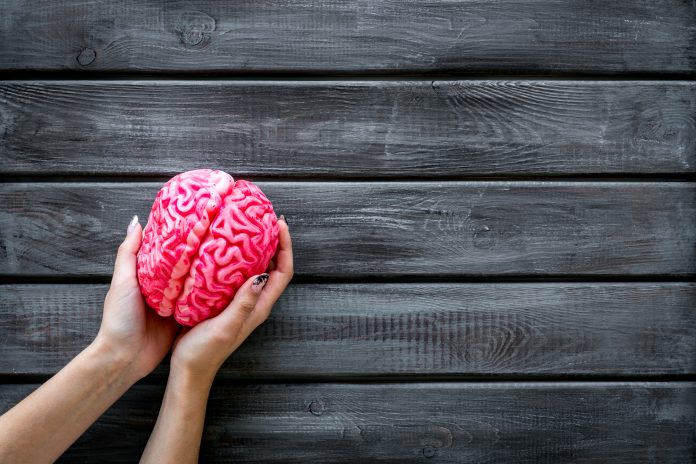Here, we examine the United States’ National Institute of Mental Health, the largest funder of research on mental disorders in the world
The United States’ National Institute of Mental Health, (NIMH), is the largest funder of research on mental disorders in the world and strives every day to transform the understanding and treatment of mental illnesses through basic and clinical research, paving the way for prevention, recovery and cure. To achieve this urgent mission and enable a better, safer future for those with mental illnesses, the NIMH does important work to confront the many challenges ahead as the lead federal agency for research on mental disorders. It is one of 27 Institutes and Centres that make up the National Institutes of Health (NIH) and currently is the largest biomedical research agency in the world.
NIMH envisions a world in which mental illnesses are prevented and cured, and there is a long way to go to bring this vision to life. NIMH recognises that today, there is a public health burden.1 An estimated 9.6 million American adults suffer from a serious mental illness (SMI) in which the ability to function in daily life is significantly impaired. As stated in their current strategic plan for research, “This public health burden demands that we harness scientific knowledge and tools to achieve better understanding, treatment, and ultimately, prevention of these disabling conditions. We must do better.”2
It is also important to note that this public health burden encompasses people from all backgrounds in the U.S. By supporting a research agenda aimed at understanding and reducing mental health disparities, the NIMH can promote better access to and engagement in community-based mental healthcare to ensure that improved mental healthcare meets the needs of all Americans.
Strategic Plan
To fulfil their mission, the NIMH has updated their Strategic Plan to accelerate progress in both basic and clinical science, which was originally published in 2008. In this new Strategic Plan for Research, with the goals of helping individuals living with mental illnesses and promoting both prevention and cure, NIMH has revised the original four, high-level Strategic Objectives (SOs) highlighted below:
- Define the mechanisms of complex behaviours.
- Chart mental illness trajectories to determine when, where, and how to intervene.
- Strive for prevention and cures.
- Strengthen the public health impact of NIMH-supported research.3
These four objectives will drive the priorities of the NIMH in a rapidly changing field. In order to carry out these priorities, the NIMH promises to support the training of scientists to carry out basic and clinical mental health research, and communicate with scientists, patients, providers, and the general public about the science of mental illnesses.
Research on schizophrenia
One example of supporting research is currently being carried out on schizophrenia, a chronic and severe mental disorder that affects how a person thinks feels & behaves. Schizophrenia is one of the top 15 leading causes of disability worldwide.4 Individuals with schizophrenia have an increased risk of premature mortality (death at a younger age than the general population). In 2008, the National Institute of Mental Health (NIMH) launched the Recovery After an Initial Schizophrenia Episode (RAISE) project – a large-scale research initiative that began with two studies examining different aspects of coordinated speciality care (CSC) treatments for people who were experiencing the first-episode psychosis.5
Technology
Furthermore, the methods of research are also changing. In today’s digital age, technology can without a doubt be incorporated to help achieve their mission. Technology is used to conduct research and aid physical health significantly, from anything as simple as using apps on your phone to map running or cycling routes. It is, therefore, possible that technology can be harnessed for mental health in a positive way, for example, we can ask, how might devices and software help with mental health screening, diagnosis, and prevention? How might they connect individuals who have mental illnesses to providers or enhance access to care in remote and under-resourced settings? How might these technologies enable the use of relevant data for research and quality improvement?
As stated by director Joshua A. Gordon, “The idea that technology can be harnessed for mental health is not a new one. There are thousands of apps aimed at maintaining or improving mental health. Some facilitate connections to mental health professionals; others provide stand-alone treatment approaches or help individuals record their symptoms and monitor their progress”.6 Newer tech approaches are also proving incredibly useful for research purposes. For example, NIMH-funded research groups and start-up companies are examining the potential of using a combination of activity monitors, digital keyboards, and phone usage in addition to in-the-moment surveys to detect the onset of depression or mania more quickly.
Even more recently, researchers have discovered a neural signature that predicts whether individuals with depression are likely to benefit from sertraline, a commonly prescribed antidepressant medication. The findings, published in Nature Biotechnology, suggest that new machine learning techniques can identify complex patterns in a person’s brain activity that correlate with meaningful clinical outcomes. This research was funded by the NIMH and will dramatically alter how depression is treated, taking much more personalised approach in the treatment of depression through machine learning. Always looking forward, the senior author disclosed, “I hope our findings are part of a tipping point in the field with respect to the impact of machine learning and objective testing.”7
References
1 https://www.nimh.nih.gov/about/strategic-planning-reports/introduction.shtml
2 https://www.nimh.nih.gov/about/strategic-planning-reports/introduction.shtml
3 https://www.nimh.nih.gov/about/strategic-planning-reports/introduction.shtml
4 Global, regional, and national incidence, prevalence, and years lived with disability for 328 diseases and injuries for 195 countries, 1990-2016: a systematic analysis for the Global Burden of Disease Study 2016. Lancet. 2017 Sep 16;390(10100):1211-1259. PMID: 28919117
5 https://www.nimh.nih.gov/health/topics/schizophrenia/raise/index.shtml
Open Access Government











